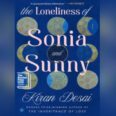
The Huntington Library, Art Collections, and Botanical Gardens has acquired one of the world’s most comprehensive collections on the history of human reproduction, the institution announced today. The Lawrence D. and Betty Jeanne Longo Collection on Reproductive Biology, composed of some 2,700 rare books, 3,000 pamphlets and journal articles, a dozen manuscripts, and a major trove of reference works, traces dramatic shifts in knowledge about women’s health and healthcare from the late 15th to the 20th century. The collection was a gift from Lawrence Longo (1926-2016), a respected California developmental physiology specialist who amassed the collection over a period of 60 years.
“The Longo Collection elevates The Huntington to one of the nation’s foremost institutions for researching the history of medicine—and, specifically, the history of obstetrics and gynecology,” said Melissa Lo, Dibner Assistant Curator of Science and Technology at The Huntington. “Dr. Longo’s keen eye has resulted in an incredibly rich array of material for researchers. Those writing histories of gender and medical education will be able to trace trends in scholarly models of the female body from as early as 1450 until the Victorian era. Others studying the status, practice, and politics of midwifery can now immerse themselves in three centuries’ worth of rare material. And those with an eye on the 19th-century professionalization of obstetrics and gynecology, and the concomitant flourishing of the field’s scientific research and surgical procedures, will now have the opportunity to engage with numerous pamphlets, manuals, and monographs—materials otherwise difficult to find under one roof.”
The collection is a vast survey of the Western practice of gynecology and obstetrics, enriched by granular social, cultural, and political detail. Included is an extremely rare first edition of the first manual for midwives, “Der schwangeren Frauen und hebammen Rosegarten” (“The Rosegarden for Pregnant Women and Midwives”), published in 1513 by Eucharius Rösselin; and Charles Nicholas Jenty’s haunting 6-plate atlas of rare mezzotints, measuring 23 inches by 18 inches, called “Demonstratio uteri praegnantis” (“Demonstration of the Pregnant Uterus”), published in 1757. Also included are Angélique du Coudray’s “Abrégé de l’art des accouchements” (“Abstract on the Art of Deliveries”), a 1759 book written by one of the most visible female midwives of the Enlightenment; and works by Gabriele Falloppio (1523–1562), the 16th-century physician and anatomist for whom the fallopian tubes are named.
Less well known but quite notable are roughly four dozen early modern dissertations and disputations on such topics as miscarriages, uterine dropsy, and “monstrous” births. The collection’s 19th-century holdings include popular manuals about these topics as well as marriage, sex, beauty, and hygiene—along with children’s health during the Victorian era and the social and political import of women’s health. Many of the books in the collection are in Latin, French, and English, but works in German, Italian, and Dutch are also well represented.
“The Longo Collection substantially augments The Huntington’s ever-growing holdings in the history of medicine,” said David Zeidberg, Avery Director of the Library at The Huntington. Acquisitions made during Henry Huntington’s lifetime established the library as a key repository for medical incunabula (material printed before 1501). In 1992, it substantially enhanced its holdings in the history of medicine when the Los Angeles County Medical Association put its rare books and manuscripts on permanent deposit. “The Longo Collection,” Zeidberg said, “adds depth and breadth to the history of a specific field of medicine —one that is of considerable and constant concern to researchers around the world.”
Lawrence D. Longo, who died last month at 89, served as Distinguished Professor of Physiology and Pharmacology in the School of Medicine at Loma Linda University in Redlands, Calif. A respected specialist in developmental physiology, he published more than 350 scientific papers and was the editor or author of 20 books. Recognition for his efforts included fellowships from the American Physiological Society and the Royal College of Obstetricians and Gynecologists of Great Britain, as well as a NATO professorship through the Consiglio Nazionale delle Ricerche of Italy.
Dr. Longo’s interests in the history of medicine began while training in obstetrics and gynecology at the Los Angeles County-USC Hospital, according to his own biographical writings. “He read Henry Cushing’s ‘The Life of Sir William Osler’—a biography of one of the four founding professors of Johns Hopkins Hospital—with great fascination and began learning more about the history of medicine from fellow classmate Garth Huston (who would become a major history of medicine collector in his own right), and legendary Southern California book dealer Jake Zeitlin,” Lo said.
Longo’s collection—a “complex tapestry,” as Longo himself described it—took 60 years to assemble. For 25 of those years, Longo edited the “Classical Contributions” column of the “American Journal of Obstetrics and Gynecology,” the monthly periodical of that organization, frequently finding himself writing about books in his own collection.
About The Huntington
The Huntington Library, Art Collections, and Botanical Gardens is a collections-based research and educational institution serving scholars and the general public. More information about The Huntington can be found at huntington.org
Visitor Information
The Huntington is located at 1151 Oxford Rd., San Marino, Calif., 12 miles from downtown Los Angeles. It is open to the public Monday, Wednesday, Thursday, and Friday from noon to 4:30 p.m.; and Saturday, Sunday, and Monday holidays from 10:30 a.m. to 4:30 p.m. Summer hours (Memorial Day through Labor Day) are 10:30 a.m. to 4:30 p.m. Closed Tuesdays and major holidays. Information: (626) 405-2100 or huntington.org.


















